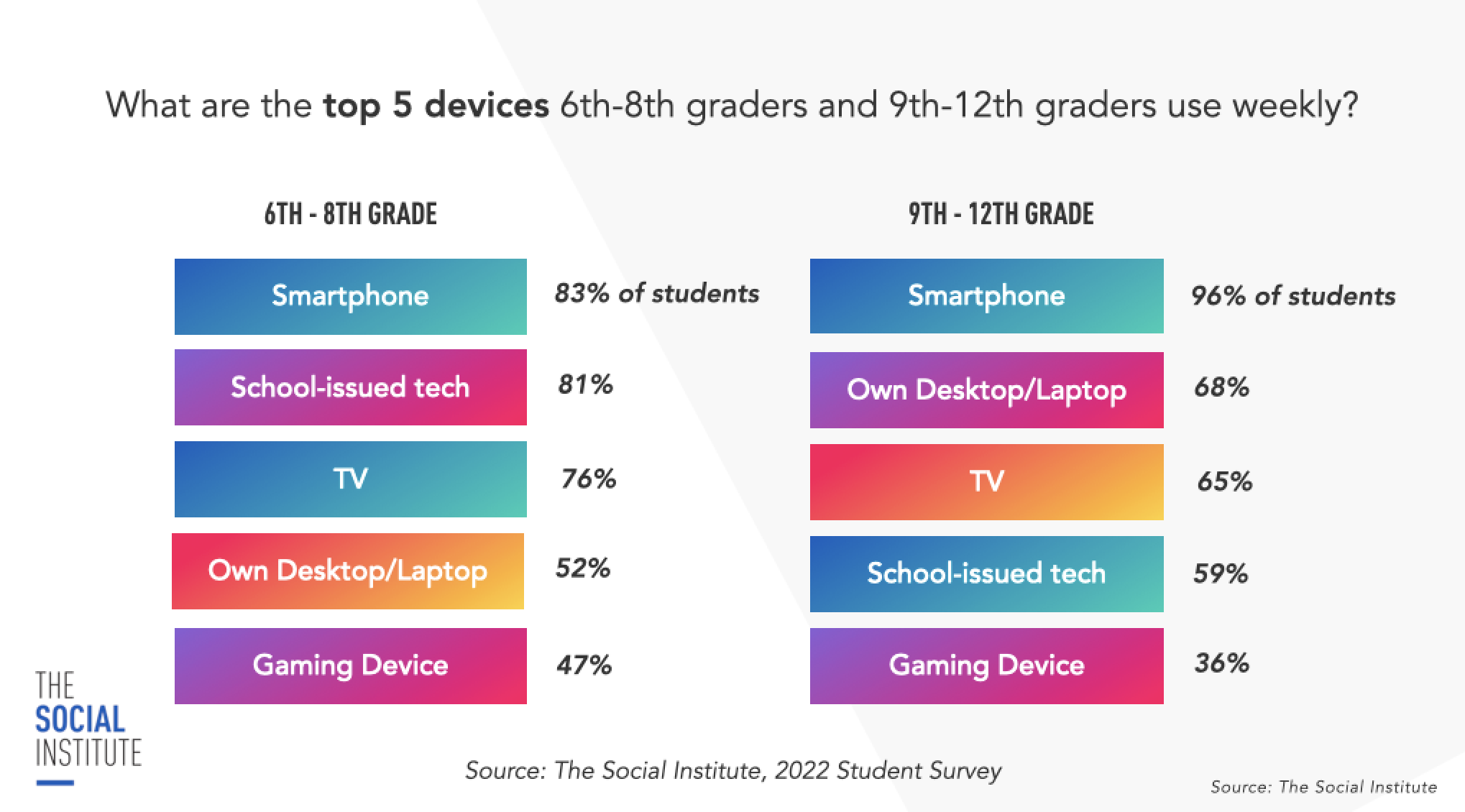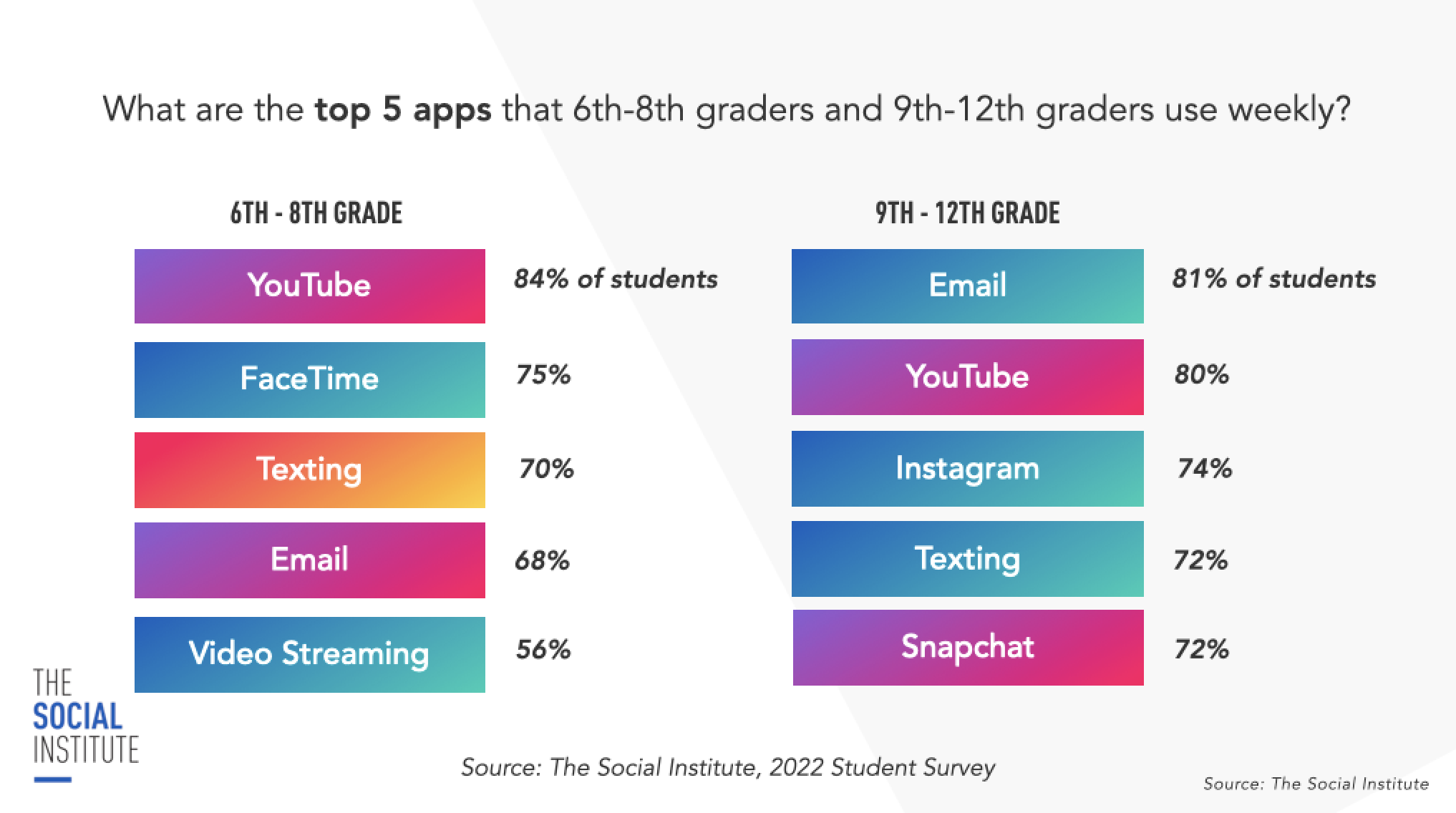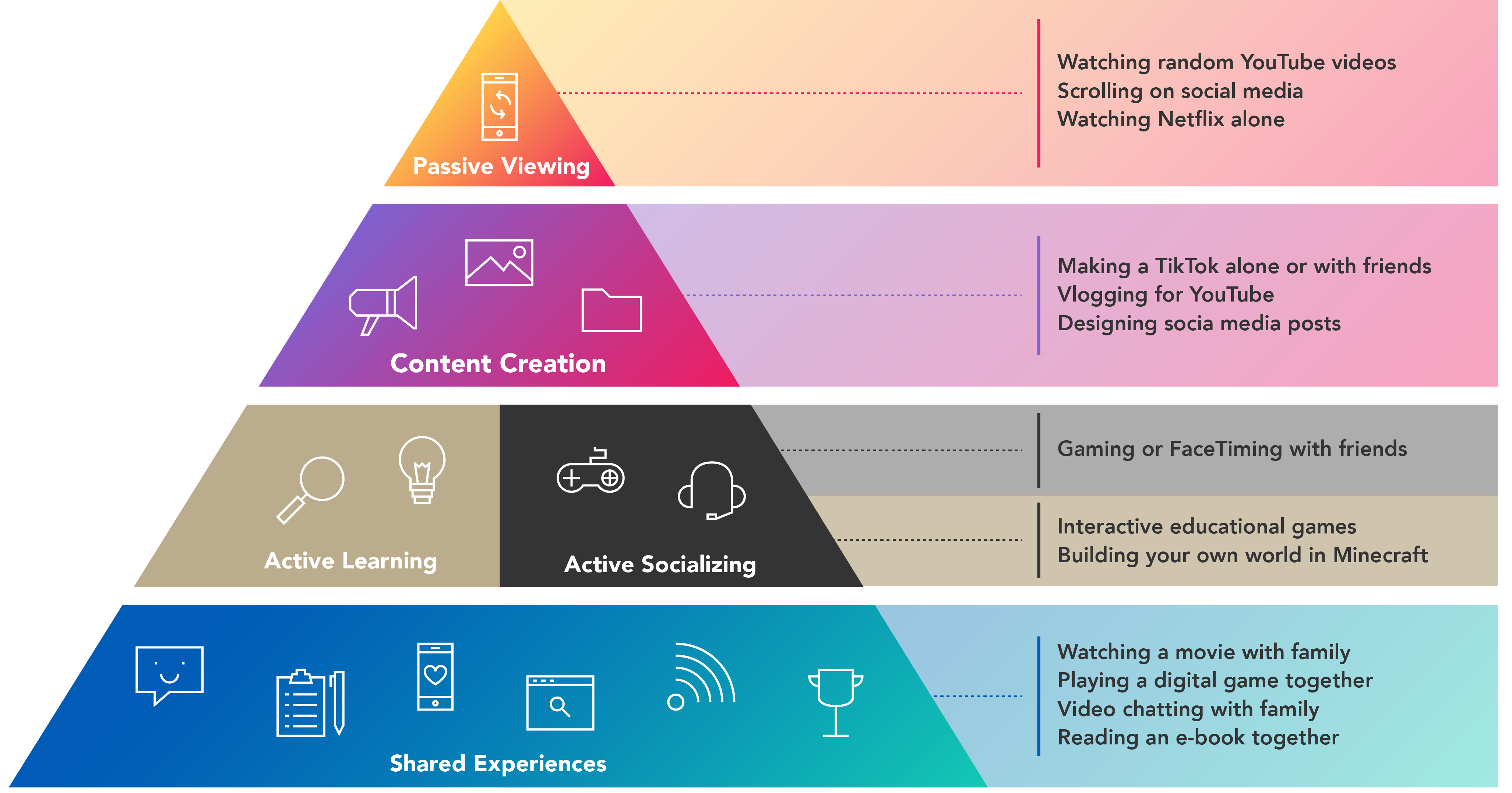The top 5 strategies to avoid digital distractions in the classroom
Access to school-issued devices, social platforms with never-ending notifications, and challenges like cyberbullying, sexting, and more. These are just some of the challenges teachers face as they strive for high-impact teaching in distracted classrooms.
The Social Institute’s founder, Laura Tierney, recently interviewed child psychologist and school administrator, Dr. Jessica Anderson to discuss how screen time affects students and a variety of approaches to avoid digital distractions in the classroom. Check out what they had to say below.
How does screen time impact student success?
In today’s world, social media is simply being social. No matter what grade your student is in, students around the world are using and seeing social media every day.
In The Social Institute’s Student Kickoff Questionnaire, the nation’s largest student questionnaire, over 16,000 students around the country have shared what devices and apps they use on a weekly basis.


Since the COVID-19 pandemic, there has been a significant increase in the number of devices used in the classroom. Schools, educators, and students are leaning into technology to socialize, stay up-to-date with trending news, and connect with communities, close to home and around the world.
With this rise in tech use, educators are facing a serious challenge: digital distractions in the classroom. From non-stop app notifications to students texting during class, digital distractions can impact learning and the ability to focus. In fact, one study found that media multitasking can decrease the efficiency of a given task.
Devices aren’t just affecting students in the classroom. A recent study found that too much screen time in students (and adults), can lead to sleep issues, obesity, and an increase in stress.
Why are devices so hard to put down?
It often is not the student’s fault that they are so easily distracted by their tech. Given how often people check their phones, it’s probably no surprise that apps and games are designed to trigger the release of dopamine, a chemical that drives people to seek rewards.
“The numbers never lie. When we asked students what was the number one dopamine-releasing moment that is hardest for them to resist, they told us it was sending a message and checking what the person sends back,” shared Laura.
From her experience with students, Dr. Anderson shared, “Students are interested in their Snapchat streaks, sharing passwords to have students keep their Snap streaks up, and being constantly aware of what is going on when it comes to social media.”
Technology and social media aren’t going away, thankfully. “Technology is a part of our lives whether we like it or not,” said Dr. Anderson. “We are using it constantly. Even if you don’t want it to consume your classroom, there are things we need to teach our students so that they can navigate their social world.”
How can we empower students to manage these challenges and create impactful learning environments? We recommend establishing clear technology standards in your classroom, attaching them to specific goals, and explaining the “why” to help build trust between you and your students. Let’s break down just how to do that.
5 tips to eliminate device distractions in your classroom
Whether students are multitasking by using their phones while doing homework or switching from one website to another, students are often ahead of the curve when it comes to using technology. However, in the classroom, it can be distracting. Empower your students to balance their time on tech with these strategies.
1. Use TSI’s Screen Time Challenge
Balancing our time online isn’t always easy. Dr. Anderson says, “Students are aware of the impact that technology plays in their lives, but they don’t always know how much time they are actually spending on it. Seeing it as a number can shock them.” Our Screen Time Challenge works with students to see how well their time spent online aligns with their goals and interests.
Click here to access this challenge and use it in your classroom.
2. Control the hardware
Students recognize that their personal devices distract them, but they might not realize how distracting others using devices can be. In fact, one research study found that even the mere presence of a cell phone can be distracting. Dr. Anderson shared these strategies on how to eliminate device distractions in your classrooms.
- Have students tilt their laptop screens down while you’re teaching
- Walk around the classroom to keep students accountable
- Use platforms that lock students’ screens
3. Recognize that not all screen time is equal
Here at TSI, we believe that not all screen time is equal. To visualize this, we created a Screen Time Pyramid, similar to the classic food pyramid, to help us organize the different ways we use our devices. With shared experiences at the bottom and passive viewing at the top, we use this pyramid to empower students to balance screen time to learn, socialize, and have fun.

4. Set technology standards as a class
With our Classroom Tech Policy, educators can download the agreement and talk with their students to set standards within the classroom. With 10 customizable standards about social media, tech, and everyday student experiences, schools and classrooms can create and agree to these standards and promise to help each other live up to them, together.
Click here to access TSI’s Classroom Tech Policy.
5. Resources for educators to strike a balance
Educators tell us that having a plan on how to equip students is the best strategy when it comes to avoiding digital distractions in the classroom. Check out these student- and educator-recommended concentration apps to share with your students to empower them to stay focused during school.
- Flora app
- Forest app
- The Do Not Disturb Feature
- Airplane Mode
Bonus: The Social Institute’s School Playbook
Social media and technology can fuel learning environments and academic success. Check out The Social Institute’s School Playbook, Educators’ Role in Empowering Students to Strike a Balance with Technology for more best-in-class strategies to empower students to manage their digital distractions and more.
Empower students to strike a balance with #WinAtSocial
We want students and educators to feel prepared to navigate social media positively, no matter what social challenge or trend is going around.
Through thought-provoking questions and engaging classroom discussion topics, our #WinAtSocial Strike A Balance Lessons challenge students to think about their own choices, how they can incorporate balance into their lives, and how to use social media to reach their goals.
Contact us today to learn how your school can empower students and educators to manage digital distractions in the classroom.
The Social Institute (TSI) is the leader in understanding student experiences and creator of #WinAtSocial, a gamified, online learning platform that equips students, educators, and families to navigate social experiences — online and offline — in healthy ways. Our unique, student-respected approach incorporates topics like social media, technology use, and current events that have a significant impact on student well-being. Lessons teach life skills for the modern day to inspire high-character decisions that support the health, happiness, and future success of students, while capturing data that provides insights to school leaders to inform school policy and communications, and enable high-impact teaching and a healthy learning environment. For schools, our turnkey technology allows for easy implementation and a comprehensive game plan to support the well-being of school communities. For schools, our turnkey technology allows for easy implementation and a comprehensive game plan to support the well-being of school communities.